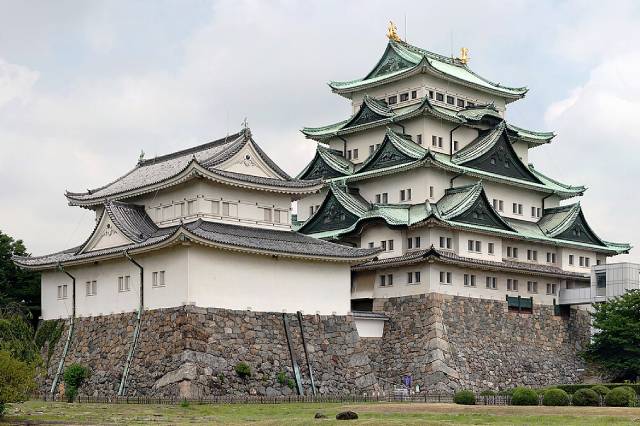
Nagoya Castle, originally built by the Owari Domain in 1612 during the Edo period, stands on the site of an earlier Oda clan castle from the Sengoku period. It became the centerpiece of Nagoya-juku, a significant castle town on the Minoji road, which connected two major Edo Five Routes: the Tokaido and the Nakasendo. In 1930, ownership of the castle was transferred to the city by the Imperial Household Ministry, establishing it as the focal point of modern Nagoya. Although partially destroyed in the Pacific War in 1945, the castle has undergone continuous restoration and preservation efforts since 1957.
Nagoya Castle is also known as Meijo, a name echoed in city landmarks like Meijo Park, the Meijo Line on the subway, and Meijo University, underscoring its cultural significance. Historically, it was sometimes referred to as Kinjo, meaning "Golden Castle," after which Kinjo Gakuin University is named.
In 1521-1528, Imagawa Ujichika, military governor of Suruga Province, constructed a precursor castle at Nagoya called Yanagi-no-maru for his son, Imagawa Ujitoyo. In 1532, Oda Nobuhide seized the castle, renamed it Nagoya Castle, and resided there; his son Oda Nobunaga was likely born there in 1534. After moving to Kiyosu Castle in 1555, the Nagoya structure was largely abandoned around 1582.
Following the unification of Japan, Tokugawa Ieyasu ordered the castle's reconstruction in 1609, establishing Nagoya as the capital of Owari Province. The castle construction, led by architect Nakai Masakiyo, set architectural standards for the Tokugawa shogunate. Starting in 1610, construction was carried out by over 20 daimyo, including Kato Kiyomasa and Fukushima Masanori, who carved inscriptions on the stones they transported for the castle’s foundation. The main keep was completed in 1612, and the Honmaru Palace was adorned with artwork by Kano Sadanobu in 1614. In 1615, the Honmaru Palace was finalized, with Ninomaru Palace following in 1617. Tokugawa Yoshinao, founder of the Owari Tokugawa lineage, took residence in Ninomaru Palace in 1620.
Renovations continued as the shogun Tokugawa Iemitsu visited in 1634, prompting the addition of new chambers and halls, painted by renowned artists such as Kano Tan'yū. Maintenance of the structure persisted, with repairs to the main keep roof and walls in 1669, 1685, and 1720, among other adjustments. By 1827, financial struggles forced the Owari branch to remelt the castle’s golden shachi (mythical dolphins) with less gold, and these were recast twice over the next decades.
Nagoya Castle's military significance dwindled as the Tokugawa Shogunate declined, and in 1870, the Owari Tokugawa submitted the castle to the imperial government. After the German diplomat Max von Brandt intervened to prevent its demolition, Nagoya Castle was preserved. In 1893, it became an Imperial residence and was opened to the public in 1906. After suffering damage from the 1891 Mino–Owari earthquake, the castle was designated a historic site in 1923 and a national treasure in 1930. The following year, it opened to the public as the property of Nagoya City.
During the Pacific War, Nagoya Castle served as a regional army headquarters and endured extensive damage from American air raids, which destroyed the main keep, Honmaru Palace, and several other buildings. Restoration began in 1957 with the reconstruction of the main keeps, which reopened in 1959, followed by further restoration in the 1960s and 1970s.
As part of the 2005 Expo preparations, English-language plaques were installed for visitors, and 3D visualizations of the Honmaru Palace artwork were produced. In 2009, a full reconstruction of Honmaru Palace commenced, which was completed by 2018. Nagoya’s mayor announced plans to restore the main towers to their original wooden structure, with fundraising launched in 2017. Sourcing for hinoki timber began in 2019, with hopes of completing the main towers by 2022.
See also
-
Kanazawa Castle

Construction of Kanazawa Castle began in 1580 on the orders of Sakuma Morimasa, a vassal of Oda Nobunaga. The castle was built on the site of the Ikko-ikki sect's Oyama Gobo temple, which is why it is sometimes called Oyama Castle. Morimasa managed to build several moats and begin construction of a castle town. However, after his defeat at the Battle of Shizugatake in 1583, he was executed, and ownership of the castle passed to Maeda Toshiie (1538–1599).
-
Nakatsu Castle
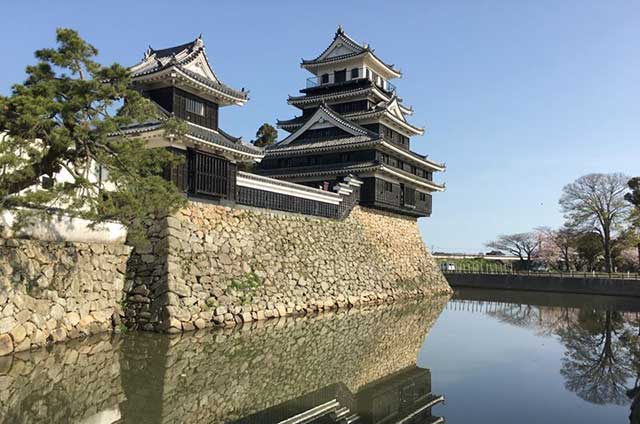
Kuroda Yoshitaka (1546–1604) was one of the closest advisors to the legendary military commander Toyotomi Hideyoshi. He took part in key military campaigns of the late 16th century, including the campaign against Shikoku in 1585 and the campaign against Kyushu in 1587. Later, during the second campaign in Korea, Yoshitaka served as chief advisor to the commander of the invasion forces, Kobayakawa Hideaki. After Hideyoshi's death, he swore allegiance to Tokugawa Ieyasu, thereby securing his influence and patronage under Japan's new leader.
-
Edo Castle
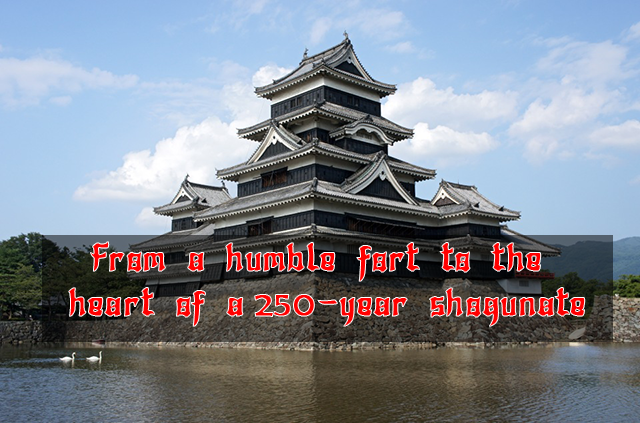
The history of Edo Castle dates back to the Heian period, when the Edo clan built a small fort on this site. In 1457, the vassal of the Uesugi clan, Ota Dokan (1432–1486), constructed a full-scale castle here. Internal conflicts weakened the Uesugi clan, and in 1524, Ota Dokan’s grandson, Ota Yasutaka, surrendered the castle without resistance to the forces of Hojo Soun, the ambitious leader of the Hojo clan. While Odawara Castle remained the clan's main stronghold, Edo was considered a key strategic fortress.
-
Samurai Museum Shinjuku
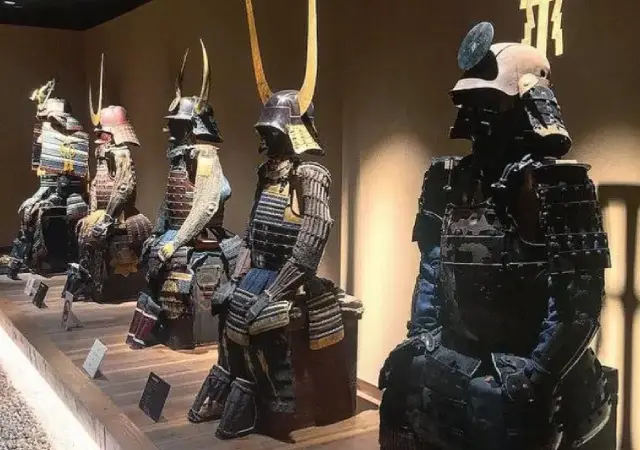
Situated in the vibrant district of Shinjuku, the museum showcases an extensive collection of samurai armor, weapons, and cultural artifacts spanning from the Kamakura to the Edo period. The exhibits aim to convey the samurai's unwavering commitment to honor and discipline, reflecting how their spirit continues to influence modern Japanese culture.
-
Anjo Castle
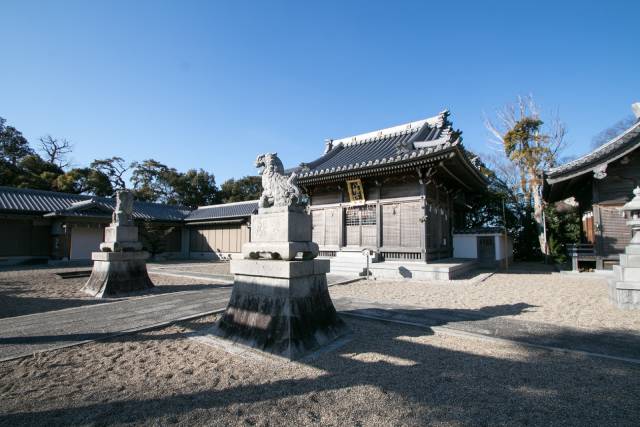
Anjo Castle was built on a slight elevation at the edge of the Hekikai Plateau, about 2 kilometers southeast of present-day central Anjo City in Aichi Prefecture. Today, the surrounding area thrives on large-scale agriculture and automotive manufacturing, utilizing the expansive flatlands and its proximity to the Nagoya region.
-
Numata Castle
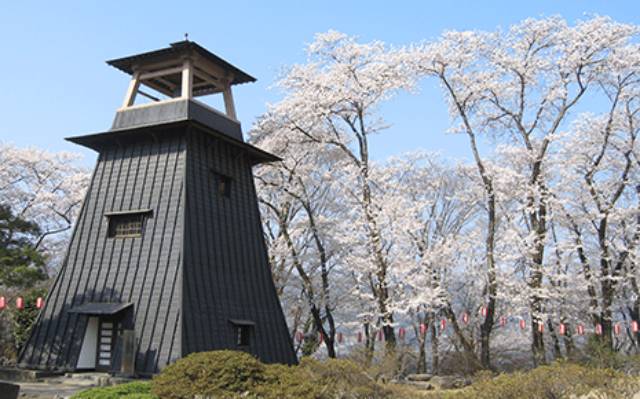
Numata Castle, located in Numata, northern Gunma Prefecture, Japan, has a rich and complex history. During the late Edo period, it served as the residence of the Toki clan, who ruled the Numata Domain. Over the centuries, the castle changed hands multiple times and was the site of significant battles during the Sengoku period.
-
Iwabitsu Castle
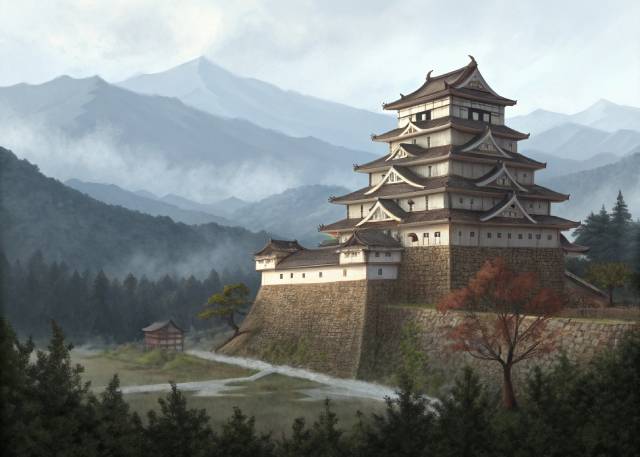
Iwabitsu Castle is a yamashiro-style (mountain) castle located atop Mount Iwabitsu in Higashiagatsuma, Gunma Prefecture, Japan. Recognized for its historical significance, its ruins have been protected as a National Historic Site since 2019.
-
Tsutsujigasaki Castle
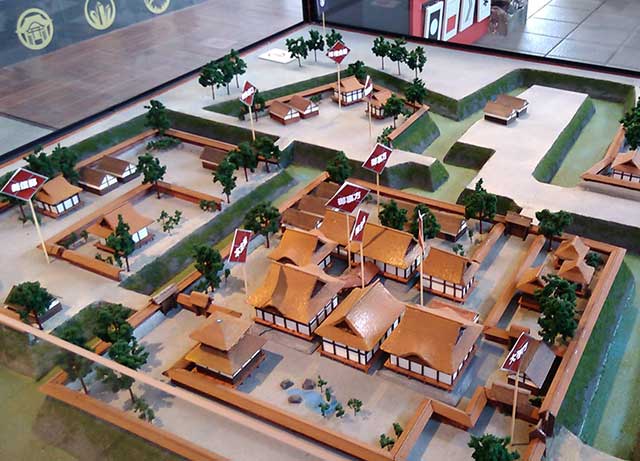
Tsutsujigasaki Castle (Tsutsujigasaki Yakata) served as the fortified residence of the last three generations of the Takeda clan and is located in the heart of Kofu, Yamanashi Prefecture, Japan. Unlike traditional Japanese castles, it was not referred to as a "castle" in Japanese, as the Takeda clan famously believed in relying on their warriors as their true fortifications, stating, "Make men your castle, men your walls, men your moats." Designated a National Historic Site in 1938, the ruins are now open to the public and house the Takeda Shrine, a Shinto shrine dedicated to the deified spirits of the Takeda clan.

